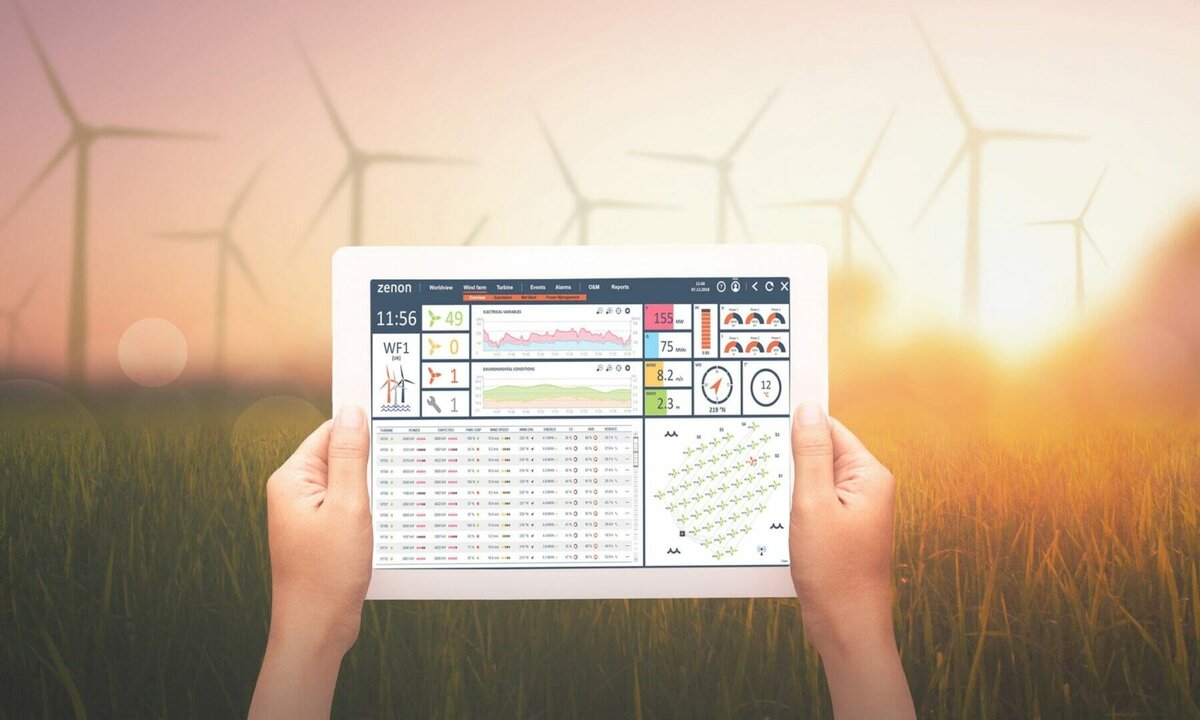According to Business, Energy and Industrial Strategy (BEIS), a record twenty per cent of the UK’s electricity was generated by wind power in 2019. To put this into perspective, this figure stood at just seven per cent five years prior. As an island nation, wind power capacity in the UK could be colossal, so how can we exploit this power and ensure new wind plants communicate effectively with the grid? Here, Garry Forfar, Energy & Infrastructure Sales Manager at automation software supplier, COPA-DATA UK, explains.
Wind farms are a huge part of Britain’s renewable energy generation goals. However, for the grid to primarily run on renewable energy sources — like wind — accurate communication of data is essential.
Data for decisions
Obtaining accurate data ensures the operator can understand exactly how a wind farm is functioning. For instance, operational data from a wind farm can be aligned with electricity demand trends and compared with weather forecasts to know how much wind power could be generated at a given time.
Using this information, grid operators will know which assets need turning on or how much energy from storage will be required. Energy providers can also use this knowledge to sell excess energy to the grid when demand is low, providing a lucrative opportunity.
Demand trends also provide an opportunity to optimise maintenance of wind farms. Overlaying predicted generation and storage data in the same system as turbine operation data, maintenance can be planned for when storage is full, demand is low and when the turbines are not required to generate energy.
To achieve this level of knowledge and flexibility, wind farm assets must be monitored carefully and accurately, but wind farm communications are not always aligned with the sector’s big ambitions.
Communication challenges
Firstly, it is important to clarify why wind farm communication is vital for the wider UK energy network. As we move towards a more flexible network and a distribution system operator (DSO), integrating renewable generation with the wider grid is crucial.
Data generation certainly is not an issue in a wind farm environment but getting data out of turbines themselves can be problematic. Usually, wind turbines are built with proprietary systems, which are solely owned by the turbine manufacturer. So, while data is being generated, it is not being captured where it should be, making it difficult to integrate with other systems.
Picture an optimised wind farm network, (virtual power plant) consisting of multiple distributed assets, all of which are manufactured by different original equipment manufacturers (OEMs) and operate on different communication protocols. Since these systems are owned by the manufacturer, the operator does not necessarily own rights to the data being produced by these assets and must pay a fee to access it.
Even so, comparing these datasets can become a time-consuming process. In a sector like wind power generation that is sensitive to change, delays can render much of the data invalid.
The alternative
Thankfully, relying on propriety software is not the only option. To simplify communications, wind farm operators should opt for a single solution to streamline their systems. An automation software supplier, like COPA-DATA, can provide this.
COPA-DATA’s zenon can communicate with multiple systems and assets in a renewable plant. In the wind farm example, zenon can obtain the data out of each turbine and pull turbine, generation, infrastructure and substation data into one place. This simplifies operations, providing more information to wind farms owners, while also streamlining communication with the wider grid.
Achieving UK’s goals
Last year, the UK government pledged a £160 million scheme to power every home in the country with wind power within a decade. With wind power critical to Britain’s renewable energy generation goals, there needs to be a greater emphasis on acquiring and analysing wind farm data.
After all, the potential of wind power capacity in the UK could be colossal. But to exploit this power, wind farms need to invest in adequate software to make intelligent communication possible.




